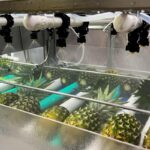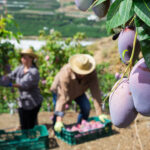Congo's urban horticulture yields US$400M surplus
The Food and Agriculture Organization (FAO) has announced an urban horticulture programme in the Democratic Republic of Congo (DRC) has reduced malnutrition and led to a food production surplus worth around US$400 million. 
The programme was focused in the country's five main cities of to improve food security, following mass migration as a result of violent conflict.
FAO said the programme now helps Congolese urban residents grow 330,000 metric tons (MT) of vegetables annually, compared to 148,000MT in 2005-06.
The organization reported only 10% of vegetables produces were consumed by growers and the rest was sold in supermarkets and urban markets, with tomatoes, sweet peppers and onions as the major products.
The cities concerned are Kinshasa, Lubumbashi, Mbanza-Ngungu, Kisangani and Likasi and have a total population of 11.5 million people.
"This programme has increased per capita daily intake of micronutrients: different types of greens, tomatoes, potatoes, carrots and other vegetables, and as such is enormous help in the fight against malnutrition, especially amongst children and breast-feeding women in cities," said FAO agricultural officer Remi Nono-Womdim.
"It helped that many of the new city dwellers were rural immigrants who already had basic knowledge of crop production.
"The great thing is we have shown this goal can be reached, what we need to do now is scale-up production in the DRC and in other parts of Africa."
The FAO urban horticulture programme used funding of US$10.4 million and the results translate to around 28.6kg of vegetables produced annually per city dweller.
The programme has also provided employment and income for 16,000 small-scale market gardners and a reached total of 60,000 people in the horticultural industry chain.
Photo: FAO














































